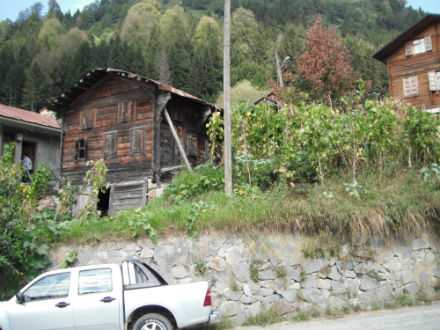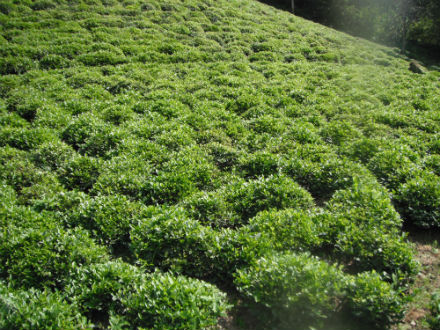AgriCulture bloggers Peter Davies and Mark Scherzer are the owners of Turkana Farms in Germantown, NY. This week Peter writes.

We have escaped the farm and are on the loose on Turkey’s eastern Black Sea coast in what was once the Byzantine Empire of the Comneni. A strange place to say the least. This coastal strip is so narrow that it can barely accommodate the four lane highway sandwiched between the sea and an unbroken chain of mountains and foothills that separates this region from the great inner Anatolian plateau. This mountain chain is pierced periodically by long, narrow valleys, some more like gorges, carved by the torrent-like rivers that carry the first spring snow melt down from the mountains. This abundance of water coupled with the region’s marine west coast climate has created the lushest forested region in Turkey. Indeed, one’s first question is where does the region’s agriculture take place?

There is no flat land to speak of, every land surface being virtually perpendicular and thick with trees, an extremely rich mix of the deciduous and coniferous, the gorges filled with rhododendrons and azaleas. But on closer inspection as I pass by I begin to detect large, irregular patches of a lighter green, something growing bushier at a lower height. And, because we have several planted at the farm. I recognize hazelnut bushes. It begins to click that this coastal region is known as the world/s major source for hazelnuts, one of the region’s main cash crops. Once I have learned to recognize them I see plantations of hazelnuts everywhere in the valleys around Trabzon. I even begin seeing individual bushes growing wild suggesting that it is in this region that the hazelnut originated. Once I have recognized the way hazelnuts are organically fitted into the landscape I begin to see tiny, irregular plots of corn or pole beans or cabbages everywhere, on the edges of streams, the verges of roadsides, the front yards of cottages and mosques, wherever there is a bit of space and sufficient sunlight. There is a great deal of vegetable production but largely subsistence level, with some of the excess going to roadside stands or markets.

As I moved eastward along the coast to the province Rize I noticed a more obvious intrusion into the dense forest growth, this looking like some extravagant form of topiary. Large and small areas of bright green bubble-like waves cascade down the slopes. The almost daily trimming required to gather the tender tea leaves that tea leaf production requires means that the bushes end up being beautifully groomed and that a mass of them takes on the look of a formal garden. Even though tea is the major cash crop of the region, as with the hazelnuts further west, there are no huge farm machines. The major cash crop of the region grows in large and small individually owned plots fitted into the larger forested landscape. Seeing huge truckloads of hay arriving regularly from the hinterlands of Anatolia seemed to make sense since there was no suitable land for pasture, but the next question that came to mind was “where are the grazing animals?” Apart from a few household milk cows there were none to be seen. Not till we climbed to the heights of the Sumela monastery was that question answered. As I looked up the mountains to where the tree line ended and the snow line began I noticed that rather than being bare rock that above the tree line all was carpeted with a smooth green something. Yes, heavily grazed grass. It was here what the villagers call the Yayla (summer camp ground) that all the grazing animals were for the summer. And it was here they would remain until the weather turned wintry and they had exhausted their pasture. The hay and other forage being stockpiled for them below was obviously intended to get them through the winter. And what do these observations show? That there are an infinite variety of ways to farm. — Peter Davies









